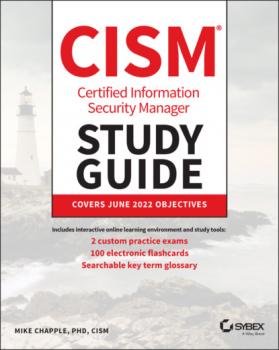ТОП просматриваемых книг сайта:
John Wiley & Sons Limited
Все книги издательства John Wiley & Sons LimitedАннотация
Men with assault rifles, balaclavas and Hawaiian shirts pulled over bulletproof vests. Horned warriors with painted faces and fur headdresses draped over their naked torsos. The storming of the Capitol brought together men who had previously come across one another only online in the Manosphere. These were men with a common interest, followers of a male-supremacist ideology, who rioted in order to fight for their privilege. Before then, the world had looked on as devastating attacks were carried out by incels: those who seek to gain unfettered access to women’s bodies by redrawing the hierarchy of the sexes in order to ensure the subjugation of women. For all of these men, masculinity is a political project, and the events at the Capitol were one episode in a growing movement. From the US and Canada to New Zealand, from Poland to Brazil, right-wing extremists, religious fundamentalists and male supremacists are coming together in order to translate their reactionary dreams of male domination into politics, underscoring the masculine roots of the authoritarian backlash.
Аннотация
Аннотация
The virtue of obedience is seen as outdated today, if not downright toxic – and yet, are we any freer than our forebears? In this provocative work, Jacob Phillips argues not. Many feel unable to speak freely, their opinions policed by the implicit or explicit threat of coercion. Impending ecological disaster is the ultimate threat to our freedoms and wellbeing, and living in a disenchanted cosmos leaves people enslaved to nihilistic whim. Phillips shows that the antiquated notion of obedience to the moral law contains forgotten dimensions, which can be a source of freedom from these contemporary fetters. These dimensions of obedience – such as loyalty, discipline and order – protect people from falling prey to the subtle forms of coercion, control and domination of twenty-first-century life. Fusing literary insight with philosophical discussion and cultural critique, Phillips demonstrates that in obedience lies the path to true freedom.
Аннотация
Despite the global movement to tackle plastic pollution, demand for plastics continues to rise. As the world transitions away from fossil fuels, plastics are set to be the biggest driver of oil demand. Single-use plastics – deemed essential in the fight against COVID-19 – have been given a new lease of life. In a world beset with crisis fatigue, what can we do to curb the escalating plastics crisis? In this book, Alice Mah reveals how petrochemical and plastics corporations have fought relentlessly to protect and expand plastics markets in the face of existential threats to business. From denying the toxic health effects of plastics to co-opting circular economy solutions to plastic waste and exploiting the opportunities offered up by the global pandemic, industry has deflected attention from the key problem: plastics production. The consequences of unfettered plastics growth are pernicious and highly unequal. We all have a part to play in reducing plastics consumption but we must tackle the problem at its root: the capitalist imperative for limitless growth.
Аннотация
Explore the foundations of modern finance with this intuitive mathematical guide In Mathematical Techniques in Finance: An Introduction , distinguished finance professional Amir Sadr delivers an essential and practical guide to the mathematical foundations of various areas of finance, including corporate finance, investments, risk management, and more. Readers will discover a wealth of accessible information that reveals the underpinnings of business and finance. You’ll learn about: Investment theory, including utility theory, mean-variance theory and asset allocation, and the Capital Asset Pricing Model Derivatives, including forwards, options, the random walk, and Brownian Motion Interest rate curves, including yield curves, interest rate swap curves, and interest rate derivativesComplete with math reviews, useful Excel functions, and a glossary of financial terms, Mathematical Techniques in Finance: An Introduction is required reading for students and professionals in finance.
Аннотация
Genomic and Epigenomic Biomarkers of Toxicology and Disease The latest developments in biomarker research applicable to toxicology and medicine Research on genomic and epigenomic biomarkers is developing rapidly with cutting-edge studies scattered throughout the academic literature, making the status of ongoing scientific activity in this area difficult to ascertain. Genomic and Epigenomic Biomarkers of Toxicology and Disease: Clinical and Therapeutic Actions delivers a comprehensive and authoritative compilation of up-to-date developments in the application of genomic and epigenomic biomarkers to toxicology, disease prevention, cancer detection, therapeutics, gene therapy, and other areas. With contributions from a collection of internationally recognized investigators, this edited volume offers unique insights into current trends and future directions of research in the discussed areas. Combining state-of-the-art information on genomic and epigenomic biomarkers from a range of specialists from around the world, this monograph includes: A thorough introduction to microRNAs as non-invasive biomarkers of toxicity and chemical hazard Comprehensive explorations of extracellular vesicle-associated miRNAs as toxic biomarkers, as well as transcriptomic applications in toxicology and medicine Practical discussions of circulating miRNAs as biomarkers of metal exposure, as well as microRNAs biomarkers of malignant mesothelioma In-depth examinations of the role of noncoding RNAs in innate immune responses perturbed by environmental arsenic with a focus on microRNAs Perfect for researchers, toxicologists, risk assessors, and regulators, Genomic and Epigenomic Biomarkers of Toxicology and Disease: Clinical and Therapeutic Actions will also earn a place in the libraries of graduate students with an interest in biomarkers, toxicology, agriculture, or the environment.










